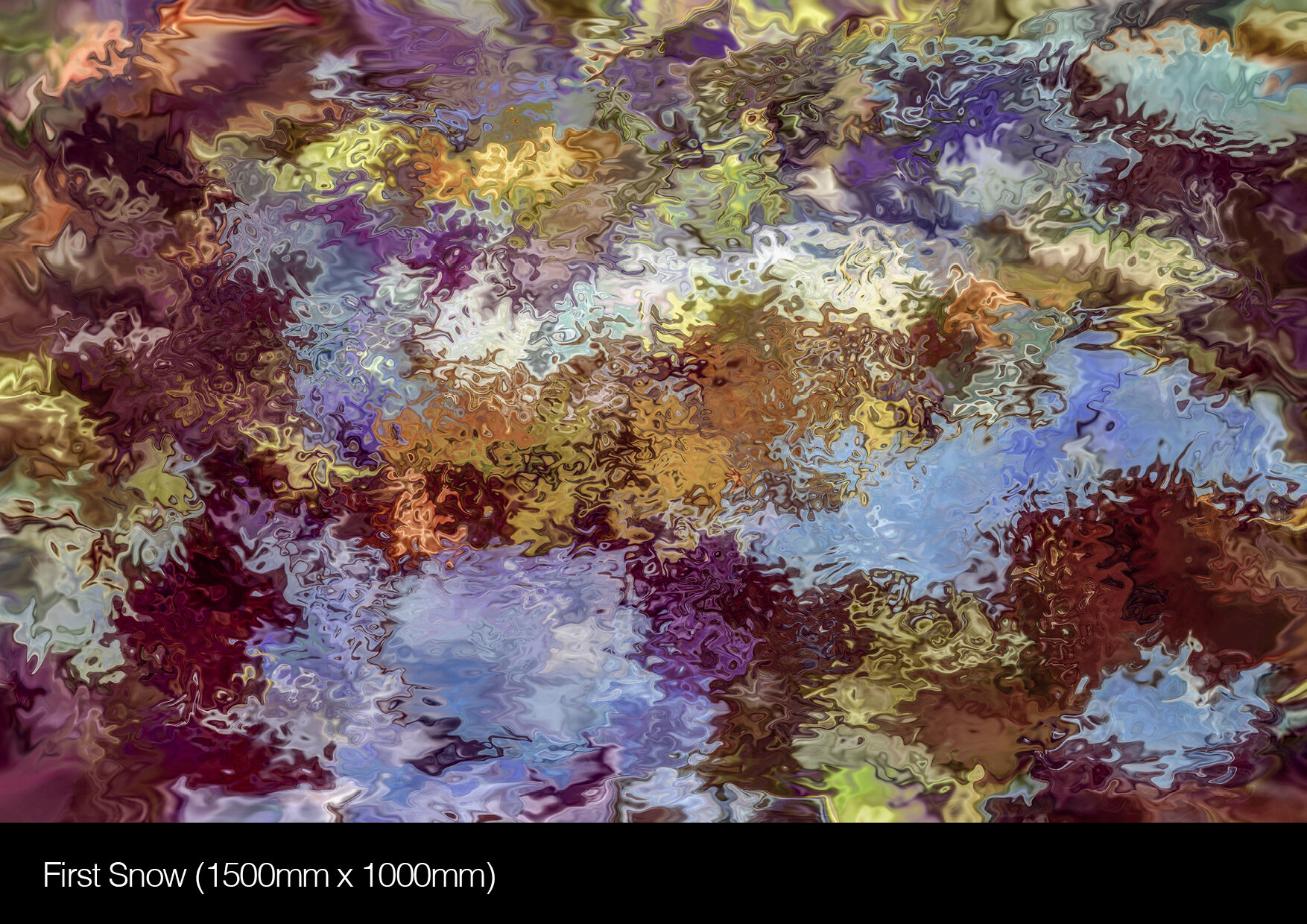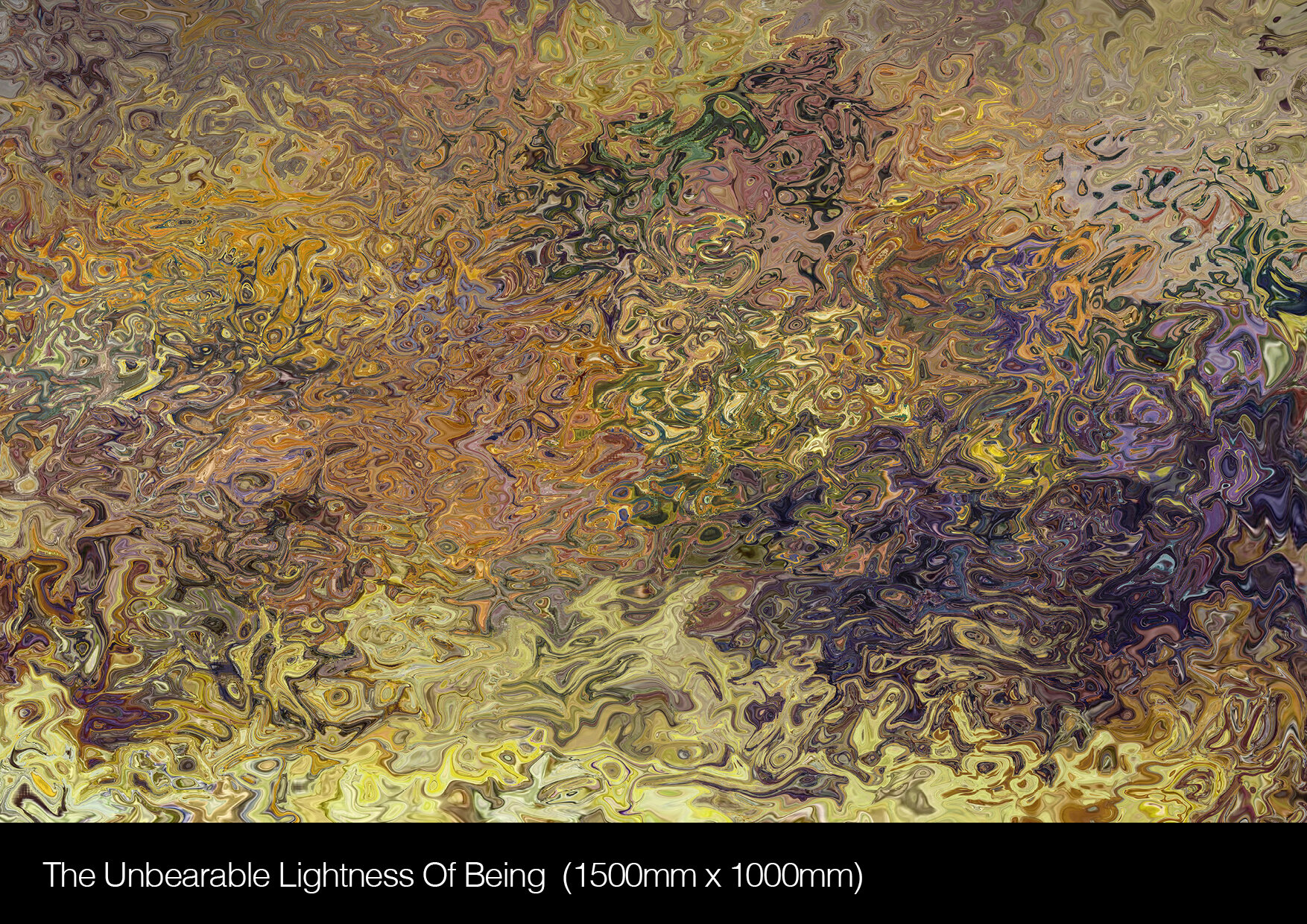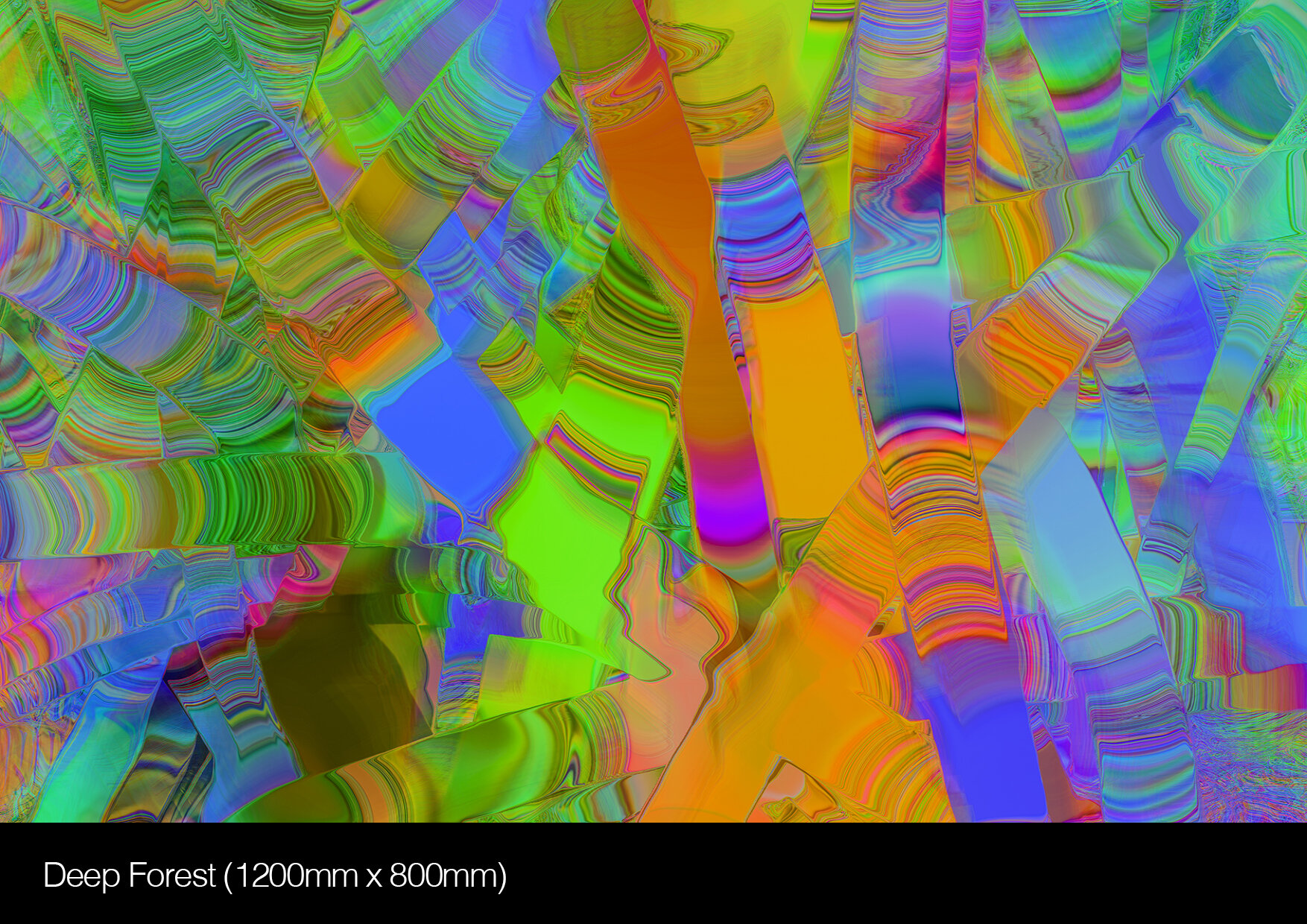















LANDSCAPES
THE GENRE OF LANDSCAPE IN SHALMIN’S ART IS MORE OF AN ASSOCIATION THAN A GENRE, BECAUSE THE BASIS OF THE PAINTINGS IS FORMED NOT THROUGH OBSERVING NATURE, BUT RATHER THROUGH THE USE OF GEOMETRIC MODULES. AS THE ARTIST BEGINS TO DEVELOP AND WORK ON THESE BUILDING BLOCKS OR MODULES, THEY EVENTUALLY TRANSFORM INTO LANDSCAPES.
These are more like internal landscapes, the landscapes of memories. Memories of places previously seen by the artist, as well as memories of other artist’s landscapes, for example William Turner and Claude Monet. In the realm of digital painting, these compositions start to inherit the qualities of ‘hyper landscapes’, where there is no such thing as a plan or a set of coordinates to describe the space, no static or substantial vision or an internal or an external space. As the viewer begins to examine the paintings, they may at first perceive these works as three dimensional and in perspective, but the layers soon merge into one, forming a two dimensional plane. As you continue to examine the painting, it appears to remain in a state of flux, gently changing between a two dimensional plane and a three dimensional space.
The plan view, or the view from above is a dominant theme in the artist’s work, much like in the late works of Claude Monet. It is precisely this view point, the view from above that allows Shalmin to depart from the surface of the Earth and to travel to greater heights, out into open space and into the realm of interstellar compositions and landscapes.
KIRILL SVETLIYAKOV,
ART EXPERT AND CRITIC, RESPONSIBLE FOR THE LATEST TRENDS AND DEVELOPMENTS AT THE TRETIYAKOV ART GALLERY, MOSCOW, RUSSIA
sasha.shalmina@gmail.com
(+44) 747 206 3877